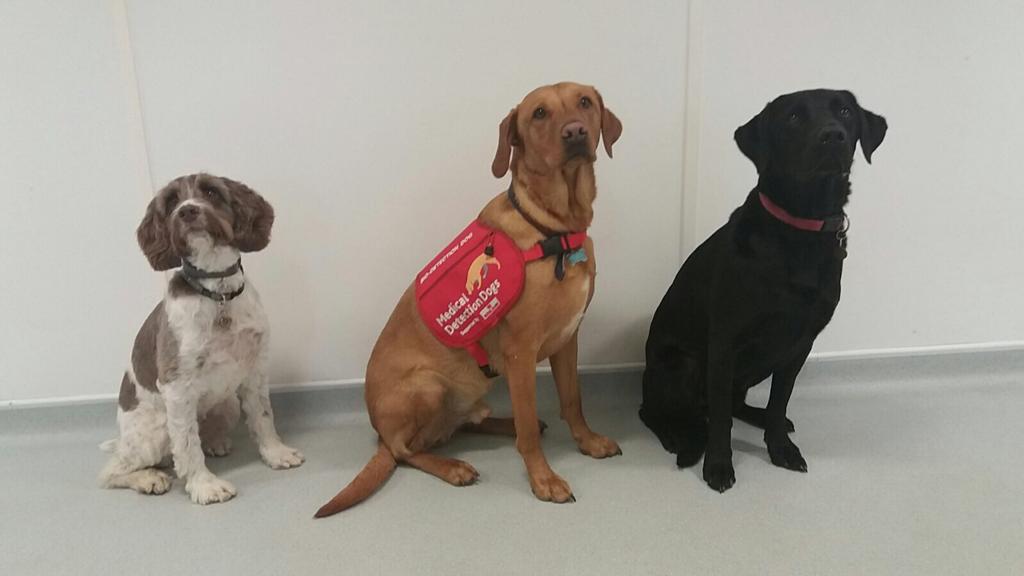BY THE OPTIMIST DAILY EDITORIAL TEAM
Meet Jodie. She’s a golden Labrador with a nose for science—literally. At first glance, she might seem like your average good girl, but Jodie is part of a growing group of medical detection dogs trained to sniff out harmful bacteria in humans. And her skills might just help change the game for cystic fibrosis care.
Scientists at Imperial College London have launched a new project that could bring the phrase “man’s best friend” to a whole new level. Their idea? Use dogs like Jodie to detect bacteria such as Pseudomonas aeruginosa, which can cause serious infections in people with cystic fibrosis (CF).
“We believe Jodie and her fellow medical detective dogs point to a new way to spot infected individuals, just by having a sniff of their socks or shirts,” said Professor Jane Davies, who leads the project. “They could become a major help in tackling antimicrobial resistance and conditions like cystic fibrosis.”
A sticky problem
Cystic fibrosis is a genetic condition that causes thick, sticky mucus to build up in the lungs and other organs, making it hard to breathe and easy for bacteria to thrive. Thanks to a class of treatments called modulators, people with CF are living longer, healthier lives than ever before. But there’s a catch: these drugs make it harder to collect the mucus samples needed to detect lingering lung infections.
“The problem is that bacteria in these patients are now much harder to detect,” Davies explained. “Without all that mucus, it’s difficult for them to cough up sputum, which is how we usually check their bacterial status.”
That’s where dogs come in. With their powerful noses, they may be able to sniff out infection from a patient’s clothing, skin, or even urine—no lab visit required.
From lab coats to labradors
The idea isn’t as far-fetched as it sounds. A few years ago, Davies’s team worked with Medical Detection Dogs, a UK-based charity, to train dogs to identify Pseudomonas in lab-grown samples. Dogs were led into a room where various bacterial samples were placed at snout level. When they found the target bacteria, they sat down. Simple. Accurate. Adorably scientific.
“We showed that in laboratory settings, dogs can detect Pseudomonas in samples,” said Davies. “Now, we want to expand that work.”
Thanks to new funding from LifeArc and the Cystic Fibrosis Trust, the team is ramping up its collaboration with Medical Detection Dogs. The goal is to train dogs to identify bacteria directly on people—no petri dishes required.
And the implications go well beyond CF. The same bacteria can affect people without the disease, and traditional tests to find them are often uncomfortable, expensive, or not repeatable. Dogs could offer a gentler, cheaper, and more consistent alternative.
Fighting superbugs with super snouts
Detecting bacteria is about more than just catching an infection early. Some bacteria, including Pseudomonas, are resistant to antibiotics, making them especially dangerous. If doctors know exactly which bacteria are present, they can choose the right medication—and avoid contributing to the growing crisis of antibiotic resistance.
“We need to pinpoint bacteria with precision to ensure patients are treated with the right antibiotics,” Davies noted. “Otherwise, we risk making resistance worse.”
Right now, antimicrobial resistance causes around one million deaths per year globally, and that number is expected to rise. While the situation is improving for children under five, mortality rates in people over 70 have increased by 80 percent since 1990.
“In the fight against antimicrobial resistance, we are going to need all the help we can get—and dogs like Jodie could be the perfect allies,” Davies said.
A paw-sitive step forward
Whether they’re sniffing socks or saving lives, these medical dogs are on the front lines of a new wave in healthcare. And while they might not replace the lab technician any time soon, they could become a vital part of a broader strategy to catch infections early, treat them accurately, and keep vulnerable patients safer.










